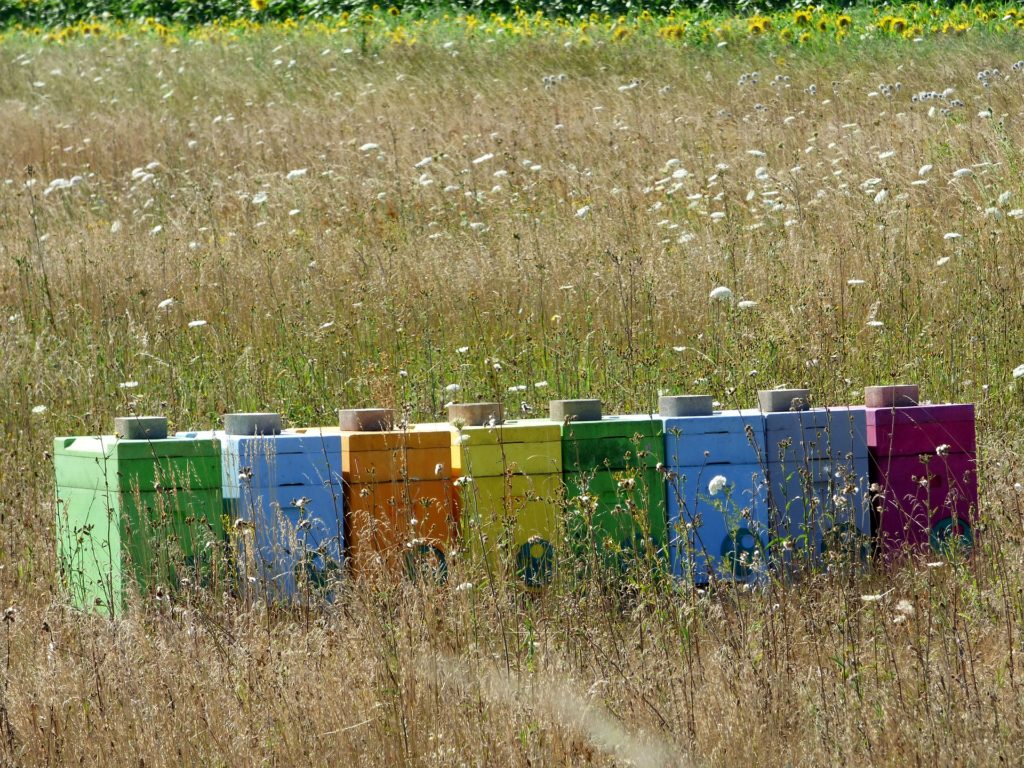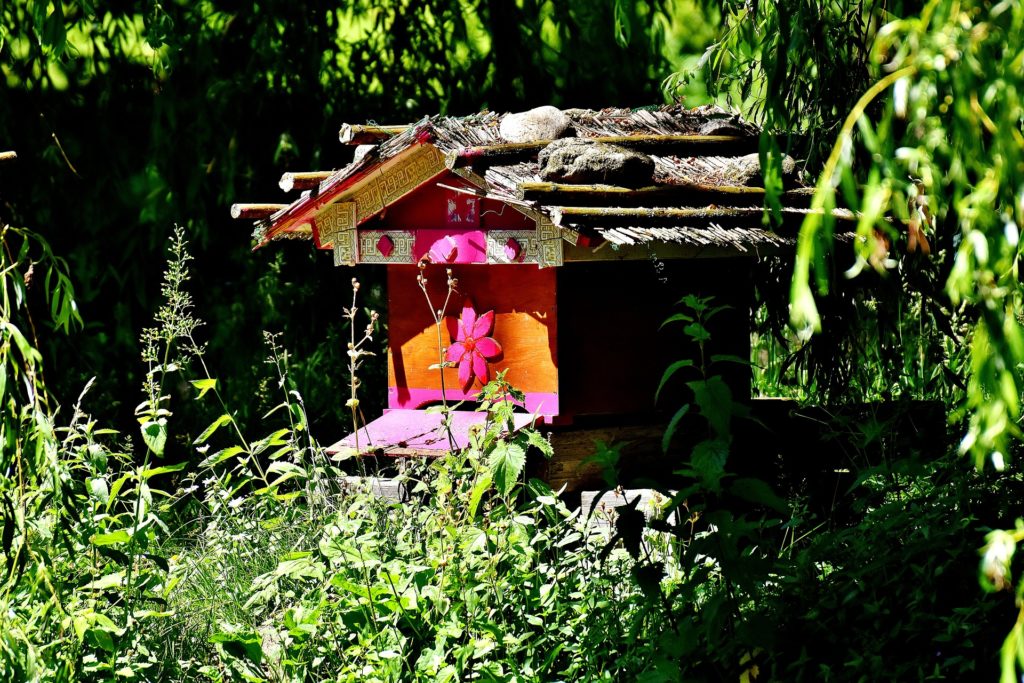This is very often the question that confuses the beekeepers. When it comes to honey bees, they are not so picky and people usually don’t have problems. The most important thing to do when painting hives is to prevent the paint from entering on the inside of the hive.
What is the best choice of colour?
Mostly, beekeepers tend to paint their hives white. This is because white is considered to be a colour that will reflect a lot of light and heat. This is very suitable for places with warmer climates. On the other hand, when talking about colder climates, it’s better to have green or brown coloured hives. These are considered to be heat absorbing colours. However, if the location of your hives is not in the sun, the temperature inside wouldn’t depend on the outside colour.

Drift – defined and explained
The colour of the hive is quite important when you have a lot of hives. The problem arises when the hives are all in the same colour, put very close to each other and when there is a big number of them. The bees may be confused about which one was their home. This is when they choose to go to the hives that are at the ends of the row. This process is called drift. So, this is why many beekeepers choose to paint their hives in different colours.

Painting tips
The most important thing to do is to apply the paint only on the outside of the hive. We all know that the paint is full of chemicals that may harm the bees. Also, always make sure that the paint is fully dried before installing your colony. Of course, painted wood is always more resistible than the unpainted, so painting the hives is surely one of the things that you must do. This will prevent any damages on the hives due to weather conditions and other external factors.
Is there a right way of painting the hives?
The thing is, you can paint your hives however you like and however you see fit. Some of the beekeepers like to paint different boxes with different colour, according to the size of the box. So, this may be one useful thing to do if you tend to have differently sized hives. Other opinions say that many beekeepers like to paint the hives green because that is one way of fitting them in the colours of nature. Hence, they won’t be located by some vandals and be destroyed. Another interesting thing is that on one hand many beekeepers choose to paint the same brand every time, and on the other, some may use their leftovers, left from different projects around their houses.


I disagree. It is very important to protect the timber from the onset of dry rot. Its as important as protecting the bees from microbes and fungus. SO, I ALWAYS prepare my boxes with copper napthanate first, then primer, then undercoat, and then a good final coat. I leave boxes exposed to weather for three months or so, so they really dry out before putting bees in them. Since the bees do not eat the paint, and generally don’t build comb on painted surfaces, I don’t believe they are affected at all, as much as they would be in a box that has become dilapidated because it wasn’t properly protected from the excess of moisture in the hive. Besides, a box needs to last 20 years, to be economical. If you don’t prepare it properly, then it will only last a short time.
There is absolutely nothing wrong with painting the inside of the hives. They last longer and hide fewer SHB when the inside is properly finished and painted. Not painting inside is nothing more than your opinion. There is absolutely no research to support the concept
Is a wax coating on the outside of the hive just as good as painting as long as you coat it every year. I like the looks of the hive much better unpainted as long as its not rotten.
What kind of paint is best used? Exterior paint? Would flat, satin or glossy be best? Can I use the same king of paint that I would paint my house or any out buildings?